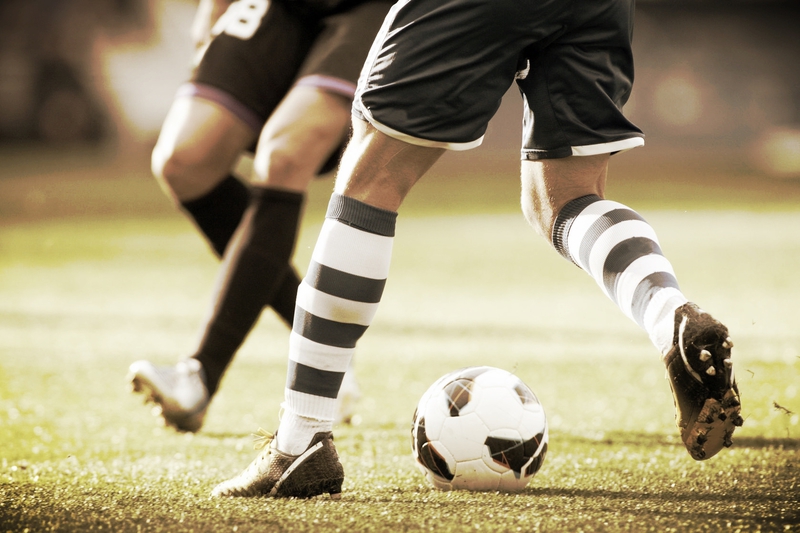
Intra-Articular Knee Effusion Induces Quadriceps Avoidance Gait Patterns
Michael R. Torry, Michael J. Decker, Randy Viola, Dennis O’Connor, J.R. Steadman
Steadman Philippon Reseach Institute, Vail, Colorado
Introduction: Most knee injuries or surgeries are accompanied by some degree of intra-articular effusion. Specific gait adaptations have been reported in the literature for knee injured and rehabilitating individuals1, 5. Studies have supported the integrated role of capsular joint receptors during normal locomotion4, 6. To date, no study has identified the effects of intra-articular knee joint effusion on otherwise healthy individuals during walking. The results of this study have broad ranging clinical applications to numerous musculoskeletal disorders. A specific clinical application is discussed.
Clinical Application: Anterior cruciate ligament deficient (ACLd) individuals have been shown to walk with a quadriceps avoidance gait pattern (QAP) that is characterized by increased hip and knee flexion, reduced knee extensor torque, power, and loss of the biphasic knee joint torque pattern1. EMG studies support these findings with increased hamstrings and reduced quadriceps activity3. The first purpose of this study was to document the effects of intra-articular knee joint effusion on the kinematic, kinetic, energetic and EMG profiles of the lower extremity during walking. Furthermore, the existence of the QAP has been observed in ACLd and ACL reconstructed individuals1, 5. To date the neurological mechanism that influences individuals to learn the adaptations has not been identified. Thus, our second purpose was to determine if knee joint capsular distention could be a mechanism that induces QAP. We propose that if the classic adaptations (increased knee flexion, decreased knee extensor torque, decreased knee power) are apparent after insulflation, then knee joint capsular distention, via effusion, may be a causative factor promoting quadriceps avoidance patterns.
Methods: Kinematic (3D), kinetic and EMG gait patterns were recorded for 14 healthy subjects (±0.1 meters, 78.5 ±4.0 kg) prior to (C1) and after additive infusion of 20, 30 and 30cc (C2, C3, C4) of 0.9% saline into the knee joint capsule. Intra-articular pressures (mm Hg) were recorded prior to and after each injection and after aspiration (C5). Subjects walked at a similar speed (±2.25% of C1) for all tests. Inverse dynamic calculations yielded knee joint torque and power curves from which angular impulse and work were derived and scaled (%BW.Ht)1. Surface electrodes (Ag/AgCl) recorded EMG signals of the vastus medialis (VMO) and lateralis (VL), rectus femoris (RF), medial hamstrings (MH) and b. femoris (BF). EMG data were processed with a 15 ms RMS window and averaged over 0-25% and 26-50% of stance, coinciding with knee power periods KP1 and KP2 (Fig. 2). EMG values were scaled to pre-test maximal voluntary contractions and are presented as %MVC. Differences between conditions were analyzed with a repeated measures ANOVA (pan style="mso-char-type:symbol;mso-symbol-font-family:Symbol">µ = 0.05) and a Bonferroni post-hoc test for specific contrasts.
Results and Discussion: Compared to C1, mean knee angle through stance decreased 6% (p=.01), 11.3% (p<0.001), and 25.2% (p<0.005) for C2, C3 and C4, respectively. Peak knee extensor torque decreased 12.3% (p<0.001), 12.7% (p<0.001), and 19.5% (p<0.001) for C2, C3 and C4. Knee extensor angular impulse calculated over the first half (0% - 50%) of stance decreased 12.6% (p<0.001), 20.2% (p<0.001), and 30.2% (p<0.001) at C2, C3 and C4, respectively. Knee joint flexor impulse was unchanged at C2 (p=0.56), but reduced 56.0% (p<0.001) at C3 and was eliminated at C4. The knee’s ability to absorb force was reduced as negative knee work occurring between 0% - 25% of stance (KP1, Fig. 2) decreased 8.3% (p=0.22), 11.3% (p=0.10), and 34.1% (p<0.001) for C2, C3 and C4. The knee’s ability to generate force was also reduced as positive knee work calculated between 26% - 50% (KP2, Fig. 2) decreased 6.2% (p=0.405), 14.3% (p=0.05), 42.5% (p<0.001) for C2, C3 and C4, respectively.
Changes in EMG support the torque and power changes. All Quadriceps activity was inhibited (Fig. 3), while the hamstring activity was facilitated (Fig. 4). All parameters returned to near pre-effusion values after aspiration. Since no rival factor (injury, surgery or rehabilitation) could have caused these adaptations, these results provide baseline effects of effusion on knee joint function by which future gait analyses of injured or rehabilitating individuals may be compared.
Summary: The general effect of knee effusion on knee joint function was a more flexed knee through stance, a reduction in peak knee extensor torque and impulse in early stance, elimination of the flexor torque phase in latter stance, and a decrease in the knee’s ability to absorb and generate force. Based on these results, the hypothesis is supported and knee joint capsular distention, via effusion, can be considered a factor in promoting QAP.

Fig. 1: Group mean knee torque curves. Positive values are extensor (internal) muscle moments.

Fig. 2: Group mean knee power curves. Positive values represent energy generation.

Fig. 3: Mean quadriceps muscle activity averaged over 0-25% of stance phase and reported in %MVC for each test condition.

Fig. 4: Mean hamstring muscle activity averaged over 0-25% of stance phase and reported in %MVC for each test condition.
References:
Berchuk M,et al., JBJS, 72A:1990.
Birac D,et al, ORS Trans.,1:231:1997.
Limbird et al., J. Orthop. Res., 6:5:630:1988.
Grillner S., Handbook of Physiology, Sec. 1, Vol II, p 1179, 1981.
DeVita P, et al., MSSE, 29:7:853:1997.
Rossignol S., Neural Control of Rhythmic Movements in Vertebrates, Chap. 7, p. 201-284.

